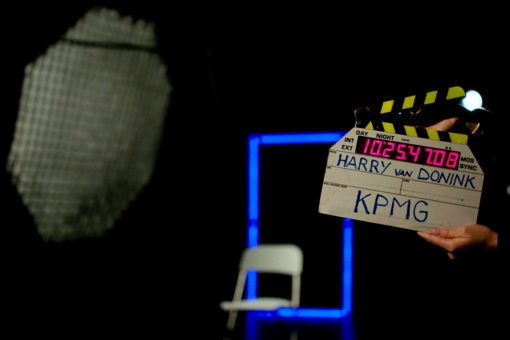The Paris Accords and the EU Green Deal leave no doubt: we must go for decarbonization. Organizations play a key role in this transition. Developing an energy sourcing strategy focused on renewable energy is an important way to achieve significant CO2 reduction. Purchasing green energy from a traditional energy supplier is often ineffective and untransparent. Other options, such as Power Purchase Agreements (PPAs), offer short and long-term advantages on strategic, operational, and fiscal levels. Karen Beullens, Energy Sourcing specialist at KPMG, and Kris Eeckhout, Indirect Tax expert at KPMG, give insights into their analysis of the possibilities.
"Companies are incentivized by legislation and regulation to work on decarbonization," Karen explains. "But there are also operational, economic, and reputational motivations. For instance, investors are increasingly convinced that organizations that pursue sustainability do a lot better in the long run. Social pressure and heightened sensitivity among consumers about sustainability is also an important factor. If an organization wants to build its reputation and growth today, sustainability must be at the heart of its strategy."
The path to renewable energy
"Governments are increasingly applying the polluter pays principle," says Kris. "Taxes and excise taxes influence the energy market from a policy that discourages fossil fuels and promotes renewables. Renewable energy is evolving from a sustainable but more expensive alternative to the cheaper standard. Especially when we consider the continuous technological improvements to generate wind and solar energy even more efficiently."
However, the search for green electricity must look beyond the current demand and companies should take a close look at the entire energy mix when transitioning to greater sustainability. Depending on the availability of sustainable alternatives (biogas, hydrogen, heat...), a technology can then be chosen that matches the organization's sustainability goals.
Today, the most common option for purchasing green energy is to purchase guarantees of origin through classic green energy contracts with energy suppliers. However, in such contracts, the origin of the green energy is not always transparent and often involves energy generated by obsolete installations. This method is therefore becoming less accepted by investors and society, meaning that organizations must identify alternatives, such as 'self-generation' or 'Purchase Power Agreements'.
Power Purchase Agreements as a viable option
"To move towards sustainability and to escape the volatile energy market, companies can generate their own energy," says Karen. "But that is not an option for all companies and is not always sufficient to cover energy demand. This is because it involves a lot of high investment costs. The company must also have sufficient space (solar panels) or a favorable location (wind turbine). Moreover, specific knowledge is needed for the construction and maintenance of an onsite windmill or solar panel park. Power Purchase Agreements (PPAs) offer a viable option for organizations, using external expertise to meet their energy needs over the long term, either on their own site or remotely. Through PPAs, organizations no longer purchase their energy through traditional energy contracts but directly from the developer of the renewable installation. This can be an energy supplier but also a developer. This also makes the origin of the renewable energy clearer and often more local, which in turn positively influences the reputation of organizations."
On-site PPA with direct line
"Under an on-site PPA, the energy is generated on the company's own site, but the renewable installation remains the property of a third party - think solar panels on the rooftops of company buildings installed by developers," Karen explains. "Of course, the purchasing organization must have the necessary space for the installation."
"With an onsite installation, in most cases the renewable energy is not delivered through the electricity grid but through a direct line. This line connects the renewable installation to the customer. Consequently, the organization does not have to pay transmission and distribution costs. However, depending on the circumstances, a regional levy may be due on the energy supplied through the direct line. In addition, renewable electricity supplied through a direct line can benefit from an excise tax exemption under certain conditions," Kris adds. "This puts the focus on the energy price. These energy prices are negotiated with the developer, leaving all options open between fixed prices and variable prices."
Scalability with offsite PPA
"With an offsite PPA, organizations are no longer limited to their own business site," Karen explains. "The renewable energy is then delivered through the power grid," she says.
"In doing so, organizations have more flexibility and scalability. For example, several organizations can purchase energy together from a wind farm,” says Kris. "The result is greater availability of renewable energy and a better position to negotiate lower prices. Because the energy goes through the electricity grid, transmission and distribution costs do not fall away with this option. Those should be included in the consideration of costs."
Certainty with virtual PPA
"With a virtual PPA, there is no exchange of electricity. It's a financial product, similar to a swap," Karen knows. "The relationship between the developer and the organization is financial and so their physical distance can be a lot greater. The organization enters into a contract with a renewable plant to make up the difference between the traditional energy price on the market and the contractual price. This allows the organization to protect itself from fluctuations in the energy market and invests directly in renewable energy installations."
"This option can be interesting for organizations, as long as they take into account that this may require specific processing in their accounting," Kris said. "Organizations need to be able to estimate what their revenue streams will be, so in addition to simulation models, they also need to have a good understanding of the energy price data and production figures of the renewable plants they are investing in."
Strategic approach required
"The switch to renewable energy is, at best, a strategic journey," Karen explains. "It's usually not a sudden switch from one thing to another. Gradual switching is usually a good option. Before organizations map out their path, they need to do a thorough analysis. What are their current and future energy needs? What are their options for renewable technologies at their company sites and beyond? When are they switching to accommodate different energy needs and how does this impact sourcing strategy? These are essential questions."
"The context offers strict standards and ambitious targets," Kris acknowledges. "Governments, investors, and consumers are putting the pressure on. But that doesn't mean the turnaround has to be immediate and ill-considered. It's always a journey."
"When organizations generate their own energy or get into a PPA, they have to take into account discontinuous generation," adds Karen. "With a traditional energy contract, the energy is always available. A PPA requires a different approach. For example, parties will need to define who is responsible for providing the additional energy needed when the plant is not providing enough energy. The organization can use a classic energy contract with guarantees of origin as a buffer, or the developer can take the risk. Depending on the choice made, this will have an impact on the energy price under the PPA."
"The term is also important," Kris explains. "With a classic energy contract, you're talking about a relatively short period; with a PPA, it involves terms of 15 to 20 years. Thorough preparation is essential. Concluding PPAs requires a different approach than classic energy contracts. It will be a learning process for many organizations to assess the risks, specific terms, and greater contractual freedom.
The future is sustainable
"A lot is moving on the regulatory and fiscal front," Kris states. "At the European and national level, governments want to move organizations to make the transition. This is one of the reasons why we are in a momentum today: it has never been so interesting to switch away from gray energy. The fiscal support measures and subsidies must not be lost sight of in this regard."
"One thing is clear: organizations face a tough challenge," Karen concludes. "The final destination is climate neutrality, but the paths to it depend very much on their context and options. A long-term energy sourcing strategy must become a key pillar in every organization's decarbonization strategy."
Starting your sustainability journey
Wondering how KPMG can support your organization when it comes to renewable energy sourcing? Reach out to our experts who are happy to help.
Connect with us
- Find office locations kpmg.findOfficeLocations
- kpmg.emailUs
- Social media @ KPMG kpmg.socialMedia




